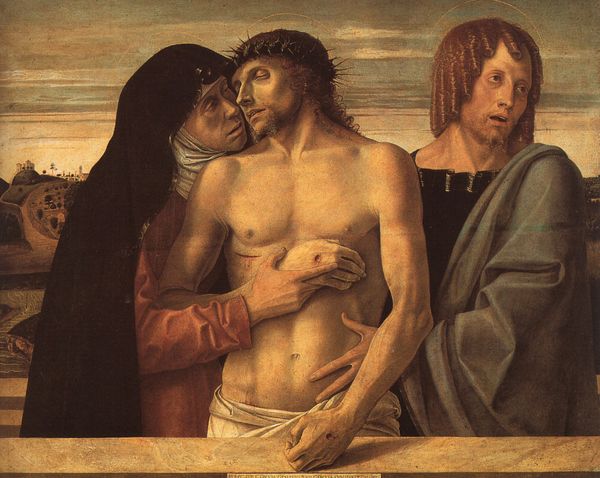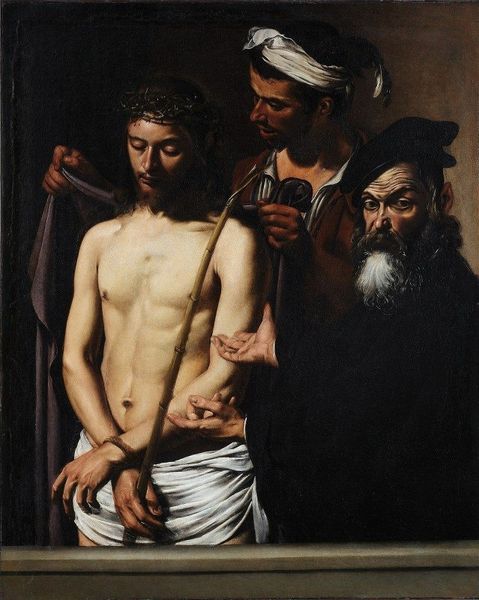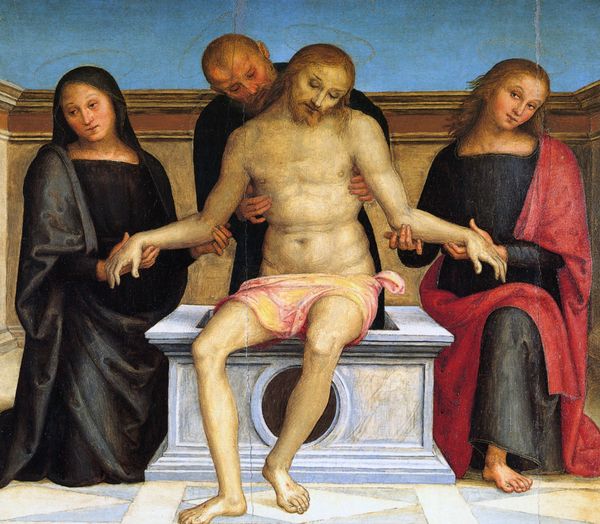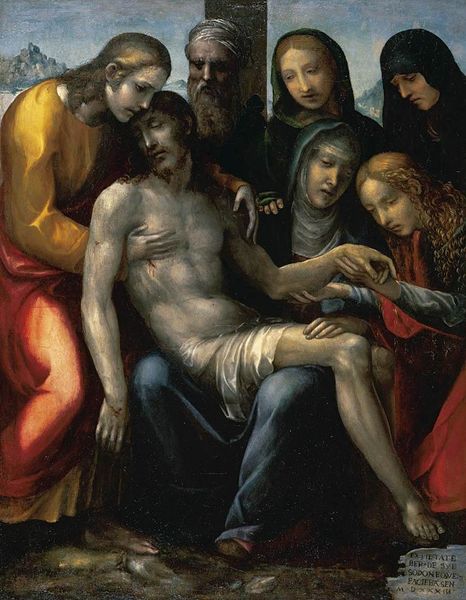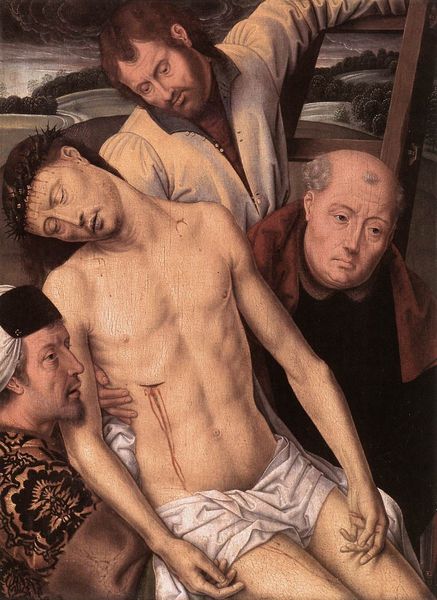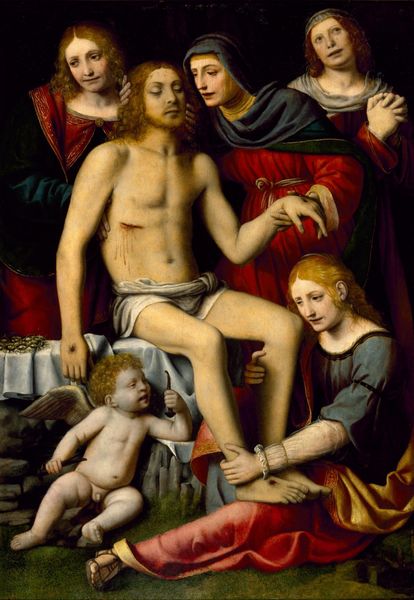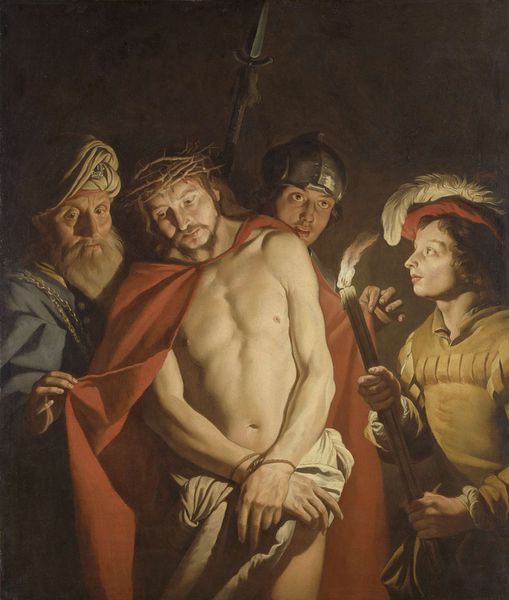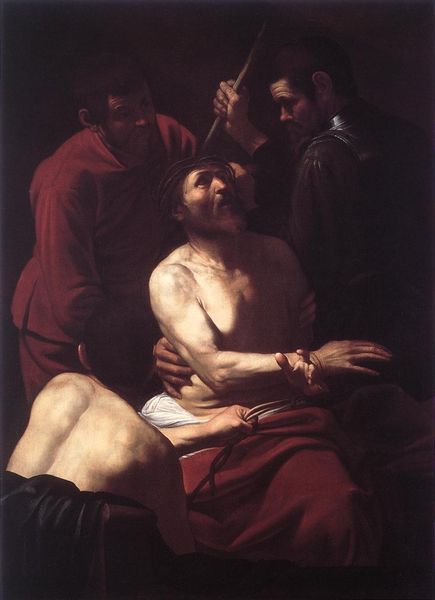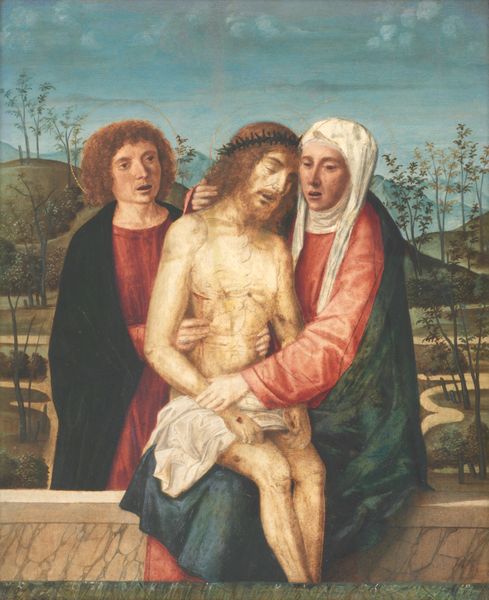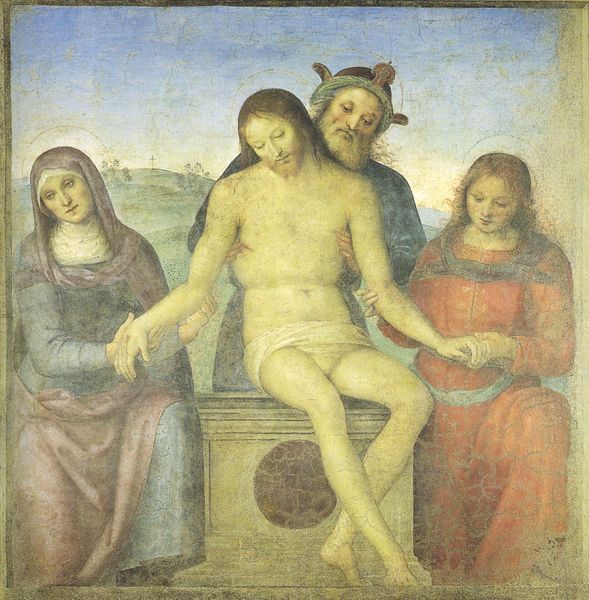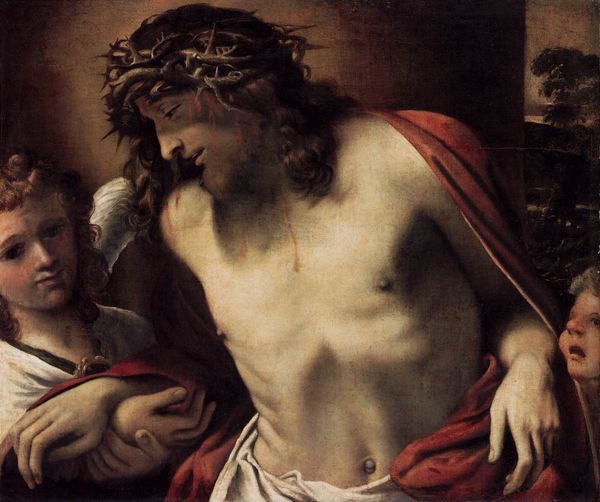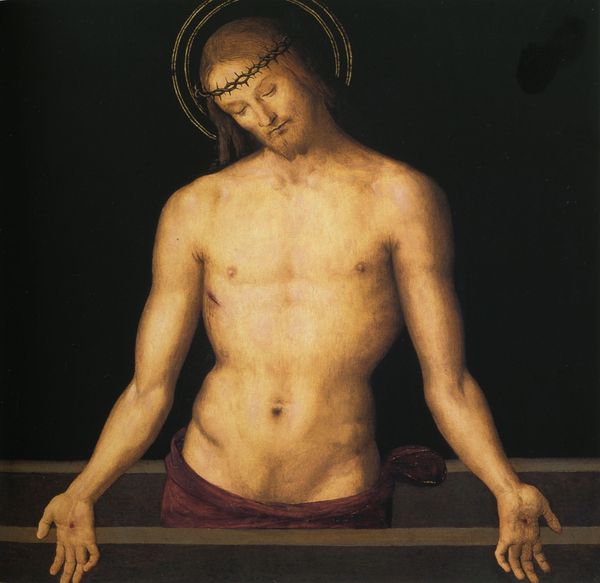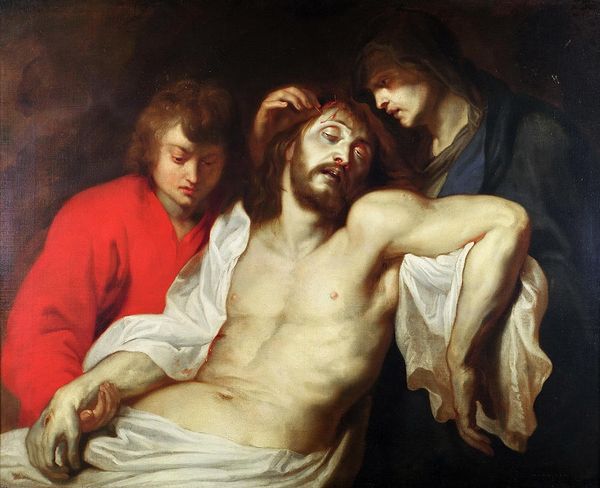
painting, oil-paint
#
high-renaissance
#
painting
#
oil-paint
#
figuration
#
jesus-christ
#
christianity
#
history-painting
#
italian-renaissance
#
christ
Copyright: Public domain
Curator: Immediately, I notice the palpable stillness in this scene. A hush seems to emanate from the oil on panel, almost tangible. Editor: We're looking at Pietro Perugino's "Sepulcrum Christi," dating back to 1498. The High Renaissance master captures a pivotal moment laden with Christian symbolism. Curator: Indeed. Perugino employs a rather symmetrical arrangement here. Note how Christ’s pale figure serves as the focal point, bracketed by the supporting figures. Their gentle hands offer both physical and emotional support. The play of light and shadow creates depth. What does this emphasis tell us? Editor: The work emerges from a culture deeply entwined with religious devotion and humanist ideals. "Sepulcrum Christi" must be understood within this socio-political and artistic context. It functioned as a devotional object within the public arena, reinforcing narratives and encouraging spiritual reflection among a specific, literate social elite. Curator: I'd say the artist's hand enhances those themes. Consider the anatomical correctness contrasted by a delicate sweetness in the subjects’ features—notice the carefully modeled muscles alongside the softened gazes. These choices were intentionally made. Editor: Of course. Commissions during the Renaissance were always steeped in specific cultural attitudes, Perugino's patrons very likely sought not just artistic skill, but the power to display their social status via ownership of such significant religious art. The painting embodies the dialogue between artistic innovation, religious dogma, and social representation so critical during that period. Curator: Do you think this representation offers some of those who looked at this painting comfort or solace given the narrative and arrangement? The composition is classically triangular which certainly provides balance but maybe evokes an emotional response that echoes grief or even possibly quiet resolution, given the period context. Editor: Undoubtedly. By providing viewers this work for engagement it reaffirms a sacred visual language for them which both solidified the commissioner's prestige, and the broader social consensus surrounding faith and governance, even with some undertones of the inevitable that all things will meet an end. Curator: Interesting observations, highlighting that these images really function beyond the purely visual or aesthetic consideration that we typically view them within a modern framework. Editor: Precisely, these weren’t just images for images' sake! Understanding these nuances truly brings Renaissance works like this one to life, I believe.
Comments
No comments
Be the first to comment and join the conversation on the ultimate creative platform.
